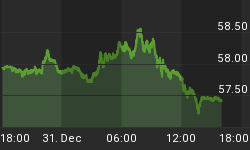On a Friday with no economic data, and with one more turn to go before the home stretch to Election 2010 and QE 2010, the markets were predictably quiet. That quiescence survived the revelation - which by now is hardly revelatory - that Fannie Mae and Freddie Mac are bottomless pits sucking up taxpayer money. The FHFA estimated (see the Bloomberg story here) that the two GSEs could require as much as $363bln through 2013 if the housing market worsens, although the cost to taxpayers would "only" be a cool quarter-trillion dollars.
But we're used to seeing ugly worst-case scenarios. What was a little more of concern to me, at least, is that under the best case scenario the total cost would be $221bln (a mere $142bln after dividend payments), or in other words another 50% or so more than has already been spent. That bears repeating. The best case scenario is that the GSEs will need another $73bln.
The other thing we know is that worst-case scenarios from government entities have had a nasty way of being exceeded by actual events (remember the "worst case" unemployment rate from the stimulus bill? The original Romer chart is below. For the record, we are around 3% above Romer's projections for late 2010, and around 1% above her worst-case analysis).

Thank goodness we didn't get the worst-case scenario!
It bears noting that these FHFA projections do not contemplate the complete unwind of the GSEs. That is to say that even if these are accurate estimates for the cost of the current crisis, they do not include any costs of protecting us against the next crisis. These aren't the numbers to get FNM and FRE to conservative leverage ratios and profitable, higher-quality lower-volume business. These are the numbers to get them off life support.
However, since the future of the GSEs, the economy, and the government may all see an inflection in the next two weeks, perhaps it's reasonable to look away from these numbers. At the very least, it is advisable to do so if you are prone to nausea.
Monday's data consists of another rotten Existing Home Sales number (Consensus: 4.30mm from 4.13mm) and activity indices from the Chicago Fed (no forecasts) and the Dallas Fed (Consensus: -8.0 from -17.7). Before July, the lowest ever Existing Home Sales number had been 4.53mm in November 2008, so keep any bounce in context! More important than the sales numbers, I think, are the inventory numbers, which have recently leveled off at the awful level of 4mm units. To get home prices to stabilize for the year ahead, that inventory needs to get back to 3.5mm units or below (see last month's commentary here. The chart is reproduced below.

More supply? Lower prices.
I don't, however, expect that the market will react very sharply to Existing Home Sales. More provocative next week are Consumer Confidence and the Home Price Index on Tuesday, Durable Goods on Wednesday, and the advance look at Q3 GDP on Friday. I expect sluggish trading otherwise, although we may start to see a little downward pressure on stocks later in the week as investors cut positions before the election and Fed meeting.
















